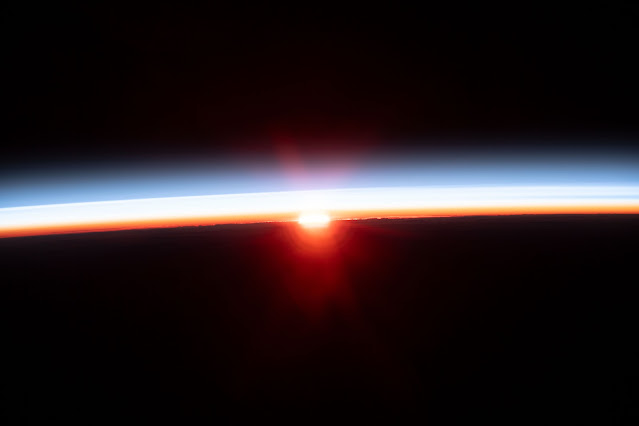Narrated Tour of NASA Fermi Space Telescope's 14-Year Gamma-Ray Time-Lapse
The cosmos comes alive in an all-sky time-lapse video made from 14 years of data acquired by NASA’s Fermi Gamma-ray Space Telescope. Our Sun, occasionally flaring into prominence, serenely traces a path though the sky against the backdrop of high-energy sources within our galaxy and beyond.
Gamma rays are the highest-energy form of light. This video shows the intensity of gamma rays with energies above 200 million electron volts (MeV) detected by Fermi’s Large Area Telescope (LAT) between August 2008 and August 2022. For comparison, visible light has energies between 2 and 3 electron volts. Brighter colors mark the locations of more intense gamma-ray sources.
The video presents the sky in two different views. The rectangular view shows the entire sky with the center of our galaxy in the middle. This highlights the central plane of the Milky Way, which glows in gamma rays produced from cosmic rays striking interstellar gas and starlight. It is also flecked with many other sources, including neutron stars and supernova remnants. Above and below this central band, we are looking out of our galaxy and into the wider universe, peppered with bright, rapidly changing sources.
Most of these are actually distant galaxies, and they are better seen in a different view centered on our galaxy’s north and south poles. Each of these galaxies, called blazars, hosts a central black hole with a mass of a million or more Suns. Somehow, the black holes produce extremely fast-moving jets of matter, and with blazars we’re looking almost directly down one of these jets, a view that enhances their brightness and variability.
Many of these galaxies are extremely far away. For example, the light from a blazar known as 4C +21.35 has been traveling for 4.6 billion years, which means that a flare up we see today actually occurred as our Sun and solar system were beginning to form. Other bright blazars are more than twice as distant, and together provide striking snapshots of black hole activity throughout cosmic time.
Not seen in the time-lapse are many short-duration events that Fermi studies, such as gamma-ray bursts, the most powerful cosmic explosions. This is a result of processing data across several days to sharpen the images.
Credit: NASA’s Goddard Space Flight Center (GSFC) and NASA/DOE/LAT Collaboration
Producer: Scott Wiessinger (Rothe Ares Joint Venture)
Science writer: Francis Reddy (University of Maryland College Park)
Visualizer: Seth Digel (SLAC National Accelerator Laboratory)
Narrator: Judith Racusin (NASA/GSFC)
Scientist: Judith Racusin (NASA/GSFC)
Duration: 6 minutes
Release Date: Dec. 20, 2023
#NASA #Space #Astronomy #Science #NeutronStars #SupernovaRemnants #Blazars #BlackHoles #Galaxies #MilkyWayGalaxy #Cosmos #Universe #Astrophysics #Physics #GammaRaySpaceTelescope #FermiMission #GSFC #UnitedStates #France #STEM #Education #Timelapse #HD #Video

.jpg)


